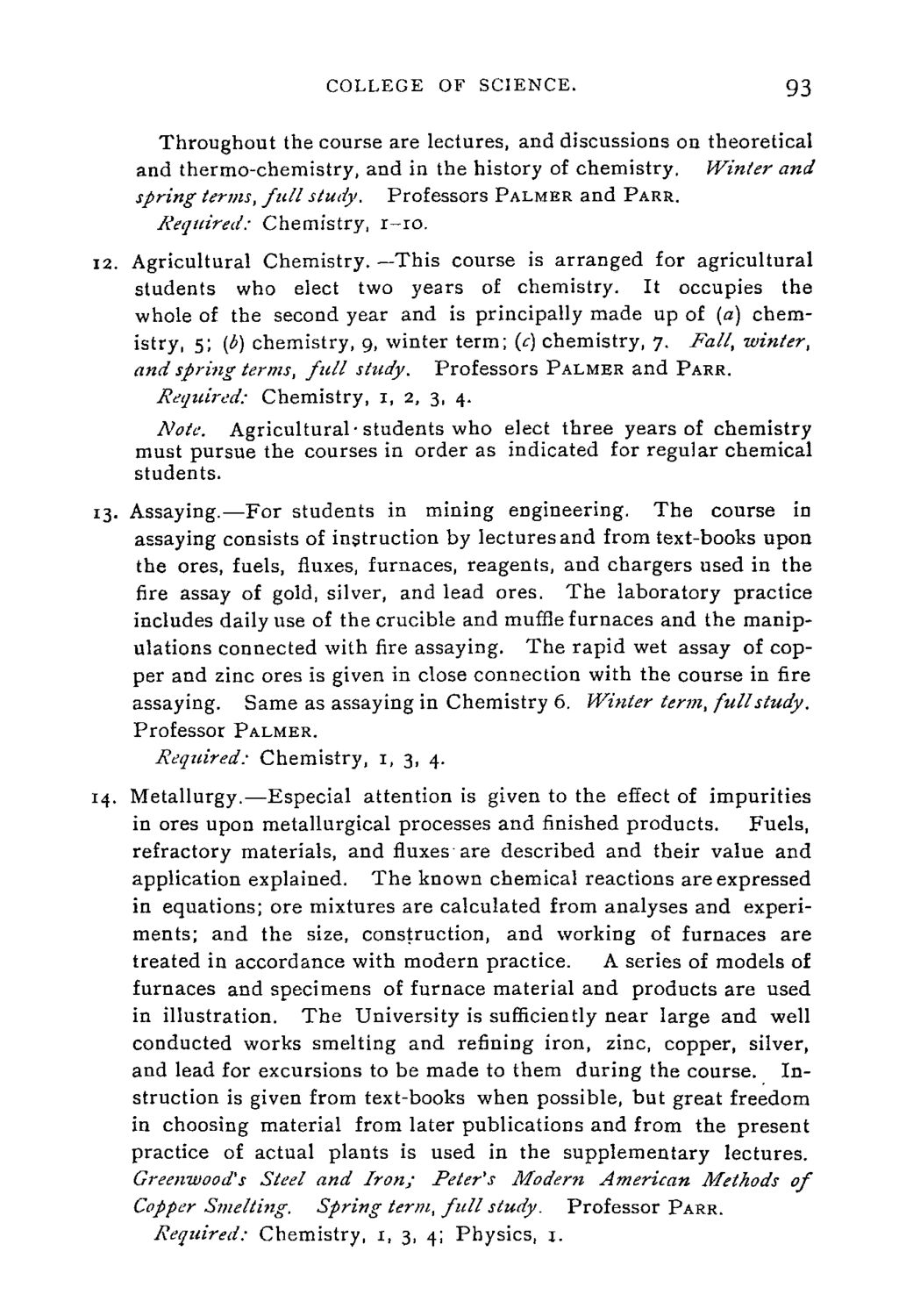| |
| |
Caption: Course Catalog - 1892-1893
This is a reduced-resolution page image for fast online browsing.

EXTRACTED TEXT FROM PAGE:
COLLEGE OF SCIENCE. 93 Throughout the course are lectures, and discussions on theoretical and thermo-chemistry, and in the history of chemistry, Winter and spring terms, full study. Professors PALMER and PARR. Required: Chemistry, I - I O . 12. Agricultural Chemistry. —This course is arranged for agricultural students who elect two years of chemistry. It occupies the whole of the second year and is principally made up of (a) chemistry, 5; (0) chemistry, 9, winter term; (c) chemistry, 7. Fall, winter, and spring terms, full study. Professors PALMER and PARR. Required: Chemistry, 1, 2, 3, 4. Note. Agricultural-students who elect three years of chemistry must pursue the courses in order as indicated for regular chemical students. 13. Assaying.—For students in mining engineering. The course in assaying consists of instruction by lectures and from text-books upon the ores, fuels, fluxes, furnaces, reagents, and chargers used in the fire assay of gold, silver, and lead ores. The laboratory practice includes daily use of the crucible and muffle furnaces and the manipulations connected with fire assaying. The rapid wet assay of copper and zinc ores is given in close connection with the course in fire assaying. Same as assaying in Chemistry 6. Winter term, full study. Professor PALMER. Required: Chemistry, 1, 3, 4. 14. Metallurgy.—Especial attention is given to the effect of impurities in ores upon metallurgical processes and finished products. Fuels, refractory materials, and fluxes are described and their value and application explained. The known chemical reactions are expressed in equations; ore mixtures are calculated from analyses and experiments; and the size, construction, and working of furnaces are treated in accordance with modern practice. A series of models of furnaces and specimens of furnace material and products are used in illustration. The University is sufficiently near large and well conducted works smelting and refining iron, zinc, copper, silver, and lead for excursions to be made to them during the course. Instruction is given from text-books when possible, but great freedom in choosing material from later publications and from the present practice of actual plants is used in the supplementary lectures. Greenwood's Steel and Iron; Peter's Modern American Methods of Copper Smelting. Spring term, full study. Professor PARR. Required: Chemistry, 1, 3, 4; Physics, 1.
| |